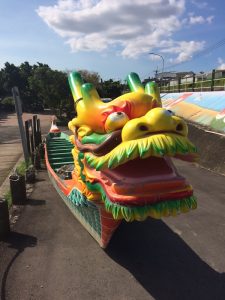CHU T’ien-hsin, “The Old Capital”
p.210-212
- You walked along, following the landmark map in your head, to Dihua Street, where you had stopped for all kinds of things for the three major holidays of the year.
- So you were forced to enter from Lane 49, one side of which was taken up by food stalls packed with dinners who looked up from their four-herb soup or oyster pancakes to stare at you.
- But you were not holding a map and your clothes were rather ordinary, so why were they “shocked to see the fisherman?”
- since the sacred ground of the 2/28 Incident was now occupied by Black Beauty Restaurant, you could not pay your respects.
- You continued on through the forest, and where it entered at a source of water, there was an empty warehouse-like building.
p.214-217
- Close read every page from 214 to 217.



TAO Yuanming, “The Peach Blossom Spring”
Please review the entire story.
“Cross-generational Conversations on the 228 Incident”
- banned books
- martial law
- White Terror
- Mainlander vs. Taiwanese local residents
- history vs. story
- second-generation Mainlander
- elites
- Peace Memorial Day
- late president Chiang Kai-shek
- Your silence is violence.
Wan-yao CHOU, “The February 28 Incident”
- collective nightmare
- Chiang Kai-shek
- Ch’en Yi
- Chinese Nationalist Party (aka KMT)
- 1947 illegal tobacco vs. Monopoly Bureau
- Resolution Committee for the February 29 Incident
- martial law
- writers, artists, educators, industrialists, people working in the media, locally elected people’s representatives, doctors, judges, public prosecutors, lawyers, local gentry, the leading aboriginals, and many others
- traumatized

Recent Comments